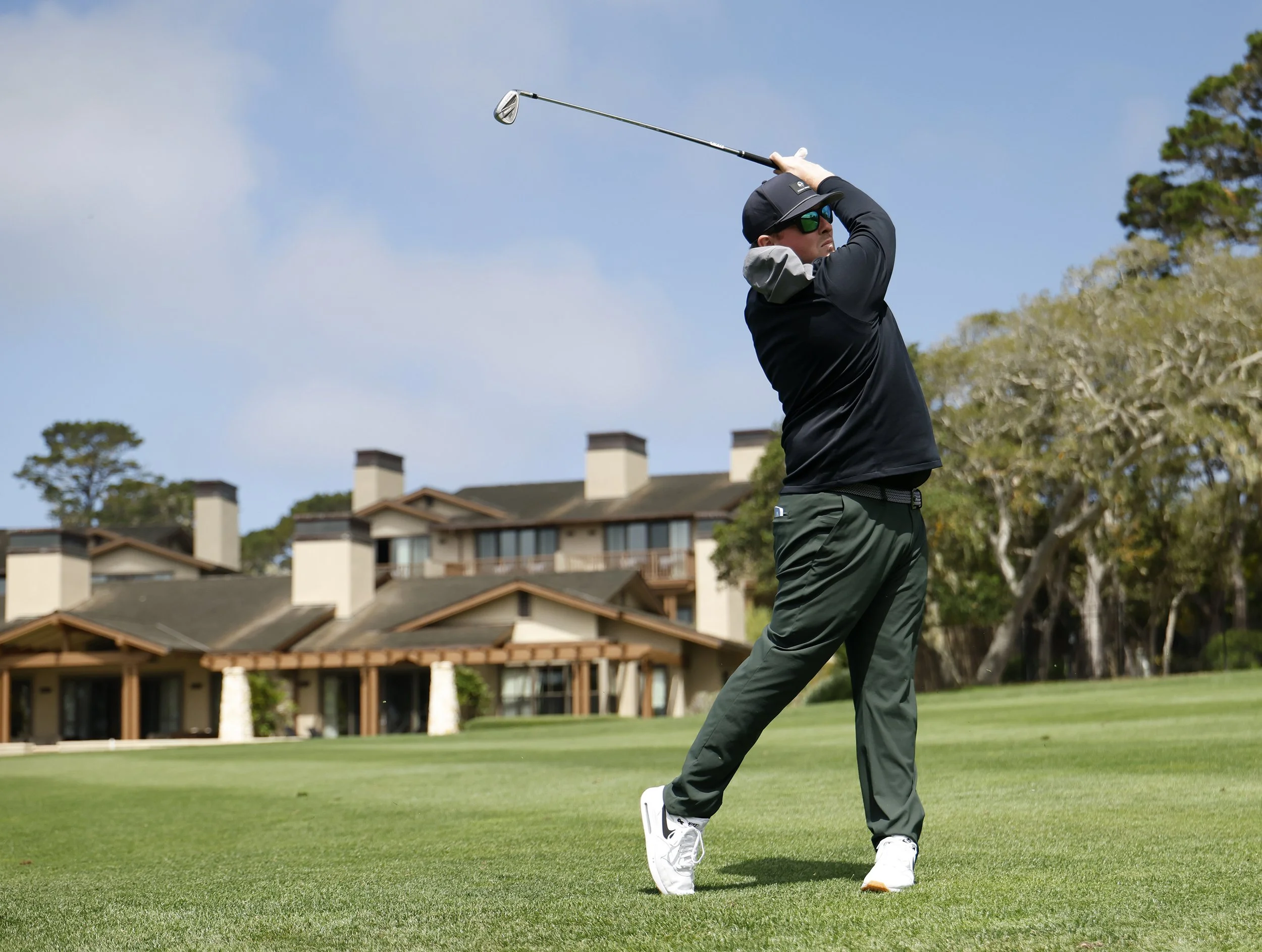Pebble Beach Golf Links and The Links at Spanish Bay: A Complete Guide for Golf Enthusiasts
Pebble Beach Golf Links and The Links at Spanish Bay are two of the most iconic golf destinations in the world. Nestled along California’s scenic Monterey Peninsula, these legendary courses offer not only world-class golfing experiences but also breathtaking views of the Pacific Ocean, rugged coastal bluffs, and cypress-lined fairways. Whether you’re a seasoned golfer or simply someone who admires the beauty of the game, Pebble Beach and Spanish Bay represent the pinnacle of golf travel.
This comprehensive guide will take you through the history, design, playing experience, must-see highlights, and practical tips for making the most of your visit. If you’re planning a golf trip to Pebble Beach Resorts, or simply researching two of the most storied courses in the game, this blog post will give you everything you need to know.
A Brief History of Pebble Beach Golf Links
Pebble Beach Golf Links is widely regarded as the greatest public golf course in the United States. Designed by Jack Neville and Douglas Grant, the course opened in 1919 with the intent of maximizing the dramatic coastline of the Monterey Peninsula. What makes Pebble Beach unique is its consistent integration of the Pacific Ocean into play—few courses in the world can match its seaside holes.
Over the decades, Pebble Beach has hosted numerous prestigious tournaments, including multiple U.S. Opens, PGA Championships, and the annual AT&T Pebble Beach Pro-Am. Legendary moments have unfolded here, from Jack Nicklaus’s 1-iron shot in the 1972 U.S. Open to Tiger Woods’s 15-shot victory in 2000.
The course has evolved through redesigns and updates, but its essence remains intact: a blend of natural beauty, strategic design, and historical significance. Today, Pebble Beach is regarded as a must-visit destination for golfers worldwide.
The Links at Spanish Bay: A Scottish-Inspired Experience
While Pebble Beach Golf Links represents traditional American coastal golf, The Links at Spanish Bay offers a different flavor of the game. Designed in 1987 by Robert Trent Jones Jr., Tom Watson, and Sandy Tatum, Spanish Bay pays homage to the birthplace of golf—Scotland.
The layout weaves through sand dunes, coastal pine forests, and rugged seaside terrain, providing golfers with a true links-style challenge. With rolling fairways, pot bunkers, and coastal winds that mimic the unpredictable conditions of the British Isles, Spanish Bay delivers a golf experience unlike any other in California.
One of its most unique features is the nightly tradition of a bagpiper playing at sunset, echoing the Scottish heritage of the design and enhancing the sense of timeless golf tradition.
Course Layouts and Signature Holes
Pebble Beach Golf Links
Pebble Beach’s layout is defined by its oceanside holes. Some highlights include:
Hole 7 (Par 3, 106 yards): One of the shortest but most photographed holes in golf, this tiny par 3 plays directly into the ocean winds.
Hole 8 (Par 4): Known for its dramatic second shot over a deep ocean chasm.
Hole 18 (Par 5): A finishing hole that hugs the Pacific coastline, offering one of the most spectacular closing stretches in golf.
Every hole at Pebble Beach offers a unique test, but what stands out most is the balance between beauty and challenge.
The Links at Spanish Bay
Spanish Bay is equally memorable, with its coastal dunes and windswept landscapes.
Hole 1 (Par 5): A welcoming opener with panoramic views of the Pacific.
Hole 7 (Par 5): Routed along the beach, this hole showcases the rugged coastline.
Hole 14 (Par 4): A classic risk-reward hole that epitomizes links-style strategy.
Hole 17 (Par 3): With the ocean on your left, it’s both picturesque and punishing in windy conditions.
Spanish Bay emphasizes the natural environment, blending seamlessly with the surrounding dunes and coastal scenery.
Playing Conditions and Strategy
Pebble Beach: Expect small, fast greens and narrow fairways. Precision off the tee is crucial, and approach shots demand accuracy. Wind conditions can shift dramatically throughout the day.
Spanish Bay: The biggest challenge is the wind. Unlike Pebble Beach, Spanish Bay plays more like a traditional links course, requiring creativity in shot-making. Keeping the ball low and controlling spin are keys to success.
Off-the-Course Experiences
One of the hallmarks of Pebble Beach Resorts is that the experience extends far beyond golf.
Dining: Pebble Beach offers fine dining at The Lodge and casual meals with ocean views. Spanish Bay features restaurants like Roy’s at Pebble Beach, offering Hawaiian-fusion cuisine.
Accommodations: The Lodge at Pebble Beach, Casa Palmero, and The Inn at Spanish Bay provide luxury accommodations with views of the courses and coastline.
Activities: From scenic drives along 17-Mile Drive to spa treatments, hiking, and exploring Carmel-by-the-Sea, the area is rich with activities for golfers and non-golfers alike.
Photography and Memories
Pebble Beach and Spanish Bay are two of the most photogenic golf destinations in the world. The cliffs, ocean, and fairways create unforgettable backdrops for photography. Many golfers choose to document their rounds professionally, capturing once-in-a-lifetime experiences that go beyond scorecards. Services like TeeTimePhotos.com offer curated photo experiences that allow golfers to relive their Pebble Beach adventures for years to come.
Travel Tips and Planning Your Visit
Booking Tee Times: Pebble Beach tee times can be challenging to secure, especially for non-resort guests. Booking a stay at Pebble Beach Resorts often ensures access.
Best Time to Play: Spring and fall offer the best balance of weather and availability, though summer guarantees warmer conditions.
Packing Tips: Bring layers—weather along the coast can change quickly. Windbreakers and sweaters are essential.
Costs: Pebble Beach is considered a luxury golf destination. Green fees exceed $600, while Spanish Bay offers a slightly lower but still premium price point.
Transportation: Monterey Regional Airport is the closest, with San Francisco and San Jose also serving as convenient gateways.
Comparing Pebble Beach and Spanish Bay
While both courses are world-class, the decision often comes down to preference:
Pebble Beach is the crown jewel, steeped in history, and should be on every golfer’s bucket list.
Spanish Bay offers a more relaxed, Scottish-style links experience with fewer crowds and a slightly more forgiving atmosphere.
Many golfers choose to play both, experiencing the contrast between the two courses.
Why Pebble Beach and Spanish Bay Are Must-Plays
Few golf destinations capture the imagination quite like Pebble Beach and Spanish Bay. Together, they provide golfers with a blend of history, beauty, and challenge that is unmatched anywhere else in the world. From Tiger Woods’s dominance to the romantic sound of bagpipes at sunset, these courses embody the spirit of golf at its finest.
Whether you’re chasing the ultimate golf bucket-list item or planning a dream trip with friends, Pebble Beach and Spanish Bay will leave you with memories that last a lifetime.
Pebble Beach Golf Links and The Links at Spanish Bay are more than just golf courses—they are living monuments to the game’s history and enduring charm. Playing these courses connects golfers to legends, landscapes, and traditions that define golf at its highest level.
From the iconic oceanfront holes of Pebble Beach to the windswept dunes of Spanish Bay, every round is a story waiting to be told. And with the right preparation, planning, and appreciation for the beauty of the Monterey Peninsula, your visit will be nothing short of unforgettable.
If you’re planning your ultimate golf getaway, consider pairing your round with professional photography services like TeeTimePhotos.com, ensuring that every swing and every view is remembered forever. Because at Pebble Beach and Spanish Bay, the experience is more than golf—it’s a moment in time, etched against the Pacific horizon.


